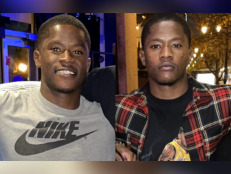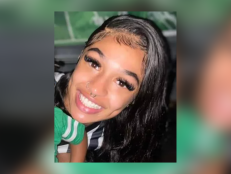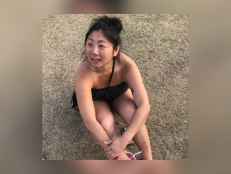The Mother Of Forensic Science: How A Chicago Woman Changed Crime Scene Investigations
A one-off conversation in a hospital recovery room led Frances Glessner Lee to create a series of tiny dioramas that revolutionized how the scenes of murders and suspicious deaths were investigated.

Photo By: National Institutes of Health
Photo By: Mandel Ngan via Getty Images
Photo By: Mandel Ngan via Getty Images
Photo By: Mandel Ngan via Getty Images
Photo By: The Washington Post via Getty Images
Photo By: The Washington Post via Getty Images
Photo By: Mandel Ngan via Getty Images
Photo By: The Washington Post via Getty Images
Photo By: The Washington Post via Getty Images
Photo By: The Washington Post via Getty Images
Photo By: The Washington Post via Getty Images
Photo By: The Washington Post via Getty Images
Photo By: Mandel Ngan via Getty Images
Photo By: The Washington Post via Getty Images
Photo By: The Washington Post via Getty Images
A Macabre Maker
Frances Glessner Lee was born in Chicago on March 25, 1878, to a wealthy family, but as a divorced empty-nester, she became a pioneer in the burgeoning field of forensic science and eventually constructed a series of miniature crime scene dioramas that were used to train police officers in crime scene work. Known as the Mother of Forensic Science, Lee is remembered for being the first female police captain in America as well as a brilliant artist who crafted each item in her dioramas.
The Socialite Scientist
Lee was the only daughter and the youngest child of a family that had made its money in farming machinery. According to her biography on the Glessner House website, she lived the charmed life enjoyed by the daughters of Chicago’s high society. Following her debut on Chicago’s social scene, she was quickly married to the law partner of one of her father’s friends in 1898.
A New Direction
By 1929, Lee was divorced and living in her own home in New Hampshire. During recovery after a surgical procedure, she struck up a friendship with Dr. George Buress Magrath, a medical examiner. Magrath regaled her with stories of his work examining autopsy findings and crime scenes to determine what caused people to die. That line of work — then referred to as legal medicine — piqued Lee’s interest.
Hello Harvard
Lee had always been interested in science and medicine, and she would have loved to attend Harvard, but women were not admitted to the Ivy League school until 1945. Instead, she used her friendship with Magrath to get a foot in the door.
The Department of Legal Medicine
Lee donated enough money to Harvard to establish a chair for Legal Medicine in 1931, and then further donated more than 1000 pieces of literature to establish the Magrath Library of Legal Medicine. The library, named for her medical examiner friend, was absorbed by Harvard’s Countway Library of Medicine in 1964 when the Department of Legal Medicine dissolved.
Bad Processes
Lee’s fascination with criminology and her friendship with Magrath led her to become a kind of armchair scholar in the field of forensic examination. She learned from Magrath that police officers often contaminated crime scenes and tainted an examiner’s ability to determine what happened at the scene.
Bad Systems
It was also common for publicly-elected county coroners, not medical examiners, to make often-inaccurate determinations about cause and manner of deaths. Even today, more than 1000 counties across the United States vote for their coroners, and coroners are generally not required to have any specialized medical training.
Scientific Method
Lee’s desire to help Magrath spread the word about scientific methods of crime scene investigation and medical examination led her to harness her power as a socialite to lobby against the coroner system of death investigation.
In-Home Seminars
Eventually, Lee was leading seminars in her own home in New Hampshire or at the state police headquarters. The two-day meetings were geared towards gathering officers and legal medicine instructors in one place to train officers in crime scene preservation and investigation. By the 1940s, the two-day meetings were weeklong conferences held at Harvard.
Repurposed Skills
As the conferences began in earnest, Lee reportedly harnessed her crafting skills to bring the crime scene lectures to life. According to an Al-Jazeera profile, Lee had once made a miniature replica of the Chicago Symphony Orchestra as a present for her mother. In the ‘40s, she began recreating miniature crime scenes so that seminar attendees could practice observing crucial elements at crime scenes.
Diabolic Dioramas
Lee began creating a series of 20 dioramas with intricate details about crimes that she read about in police case files. She was meticulous with her work and was careful to include details like blood spatter, position of the bodies, and home decor. The creations came to be known as Nutshell Studies of Unexplained Death.
Grisly Scenes
The dollhouse-sized scenes were from a variety of scenarios including a woman found dead in her bed, two people murdered in their home, a woman killed in a parsonage, and a young man found dead on the street.
Not A “Whodunit”
In a 1952 edition of the Journal of Criminal Law and Criminology, Lee wrote that the dioramas were an “exercise in observing, interpreting, evaluating and reporting.” The point was to teach police officers to observe even the most minute and seemingly insignificant details at a crime scene and to consider everything they saw as clues that could help them solve the case.
A Different Examination
Lee’s work was on display at the Renwick Gallery at the Smithsonian American Art Museum for a few months in 2017-2018. It was the only public display of the nutshells to date, and visitors to the gallery were invited to examine the scenes via flashlight.
Secrets
Lee died in 1962, and her nutshells are now the property of the Baltimore Office of the Chief Medical Examiner, which held an annual seminar named in Lee’s honor until 2020. The office still takes care of the nutshells, which are not available for public view.








![Martella Tyler [main] was murdered by her husband, Justin Tyler [inset], on June 5.](http://investigationdiscovery.sndimg.com/content/dam/images/investigationdiscovery/crimefeed/legacy/2022/06/martella-tyler-facebook-martella-tyler-madison-county-jail-justin-tyler-06102022.png.rend.hgtvcom.231.174.suffix/1654873009629.png)
